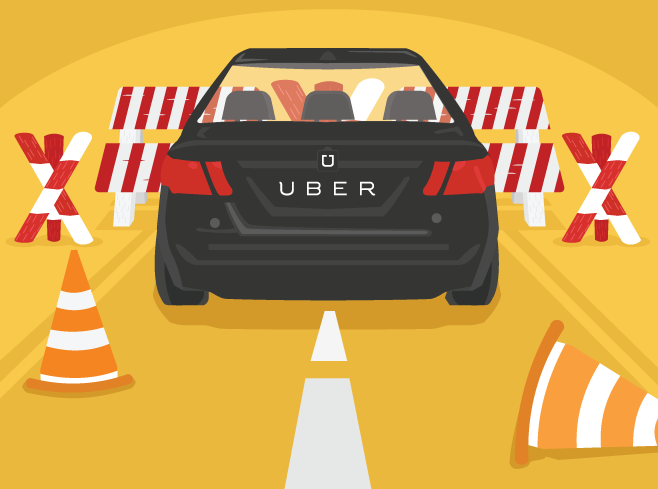
Illustration by Tech in Asia’s Andre Gunawan.
I have an early morning flight to catch tomorrow from Bangalore to Delhi. Normally, I would have booked an Uber, whose service I’ve come to appreciate since its entry to India a little over three years ago. But protesting drivers have disrupted services of both Uber and its main Indian rival Ola in recent weeks. So, to be safe, I booked a radio taxi cab from Meru, which takes advance bookings as well as on-demand.
I was surprised to see a charge of a little over INR 600 (US$9) for the ride, because just a week earlier I had paid around INR 900 (US$13.5) for a trip from the airport to my home. Meru runs by meter and doesn’t have variable pricing like Uber, so this was a straight rate cut. It is reported to have made a similar cut of 30 percent in its fare in Delhi and the National Capital Region. So I look forward to using Meru there too, tomorrow.
It’s a smart move by Meru to win back the customers it had lost to Uber and Ola over the past few years. The two ride-hailing apps have thrown money into trying to win the Indian market with discounted fares for riders and lucrative incentives for drivers. Now, having got a critical mass of drivers and riders, they’re both trying to stem the cash burn.
‘Overworked and underpaid’
I spoke to an Uber driver in Bangalore, who said his incentive payment had dropped from INR 2,000 (US$21) to INR 600 (US$9). Even though Uber has raised fares for riders, it doesn’t cover the drop in earning for drivers. Besides, to get the incentive, the driver has to complete 15 or more trips in a day. Hence the protests over being “overworked and underpaid.”
I also spoke to a Meru driver, who resisted the temptation to switch to Uber or Ola as many others did. He’s content with doing five or six trips a day, mostly to and from the airport, where Meru and other radio cabs are designated as airport taxis. Travelers don’t need to hail a cab from their smartphone; they can just get into an airport taxi and pay by the meter.
Today, the Meru driver and the Uber driver earn roughly the same, but the former has a much lower workload. This suggests that the standoff between drivers and Uber and Ola will continue to simmer, until the ride-hailing apps make it worth their while to work thrice as hard as Meru drivers.
The public transport systems in most Indian cities are a nightmare.
For commuters like me, who’ve got used to the convenience of an Uber or Ola, it’s like being transported back in time. It’s easy to get a Meru at the airport, but you rarely get one in the city on demand. So I’m having to relearn the art of haggling over prices with auto-rickshaws (India’s tuk-tuks).
The public transport systems in most Indian cities are a nightmare. That’s unlikely to end any time soon, although Elon Musk’s hyperloop transportation has big plans for India. Until the hyperloop arrives, or the Uber-Ola imbroglio is resolved, urban commuters like me will be in limbo.
See: 12 tech trends that will define 2017
This post Meru strikes while the iron is hot, even as Uber and Ola are in limbo appeared first on Tech in Asia.
from Tech in Asia https://www.techinasia.com/meru-strikes-as-uber-ola-are-in-limbo
via IFTTT
No comments:
Post a Comment